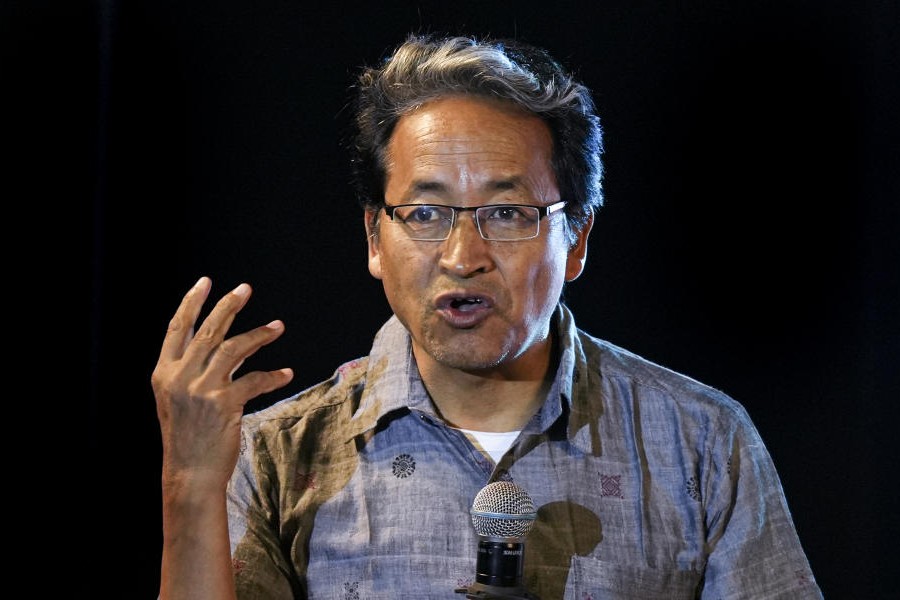In January, the International Court of Justice saw South Africa present its 84-page legal dossier detailing allegations of genocide brought against Israel. Western media giants were widely criticised on social media platforms for what has been described by the Palestinian writer and analyst, Yara Hawari, as an “outstanding” lack of adequate coverage of the hearings. Furthermore, the same media giants that pointedly failed to broadcast South Africa’s case went on to air Israel’s two-hour-long defence against the allegations in a later session.
In a move that many have hailed as a necessary corrective to this blatant media bias, clips featuring several actors, including well-known faces from Game of Thrones, reading out key passages from South Africa’s case against Israel were circulated widely on social media platforms. The videos have since gone viral, with X users pointing out that the limited coverage of South Africa’s arguments had had the unintended effect of ensuring that hundreds of internet users would be made familiar with the details of the charges brought against Israel.
While digital activism is not new to us, what sets the current situation in Gaza apart is that one would be hard-pressed to name any other ‘conflict’ in history which has seen such extensive real-time uploading and sharing of videos and images of brutal slaughter, displacement, and resilience across social media platforms. Every single development in the past few months in the lives of the Gazan people has been meticulously documented and streamed directly to our mobile devices. Ideological wars continue to be fought in X threads, Instagram reels and TikTok comments as propaganda machines work overtime to churn out contrasting accounts of a decades-old conflict. Images of violence and destruction flood in from Gaza, often in defiance of deliberate media and internet blackouts, even as content creators on TikTok and Instagram take to their ring lights and phone cameras to create videos, memes and trends advocating for the rights of the persecuted.
And, yet, one cannot help but be dismayed at the implications of the need to relentlessly post, share and reshare images of death, dismemberment, despair and destruction of a people on a daily, even hourly, basis. Grieving privately is a privilege no longer granted to the traumatised victims of the carnage, as cameras must constantly point to and shoot scenes of overwhelming devastation in an effort to humanise victims and survivors. Uploading their agony for digital consumption and feeding their pain to the algorithm seem to be the only methods available to the Palestinian people to articulate their pleas for an acknowledgement of their human dignity. On October 17, 2023, for instance, the Palestinian health ministry in Gaza held a press conference surrounded by piles of corpses in the aftermath of the Israeli attack on Al-Ahli Baptist Hospital. Doctors in medical scrubs stood surrounded by the dead. One man cradled a deceased infant, another held the lifeless body of a young girl in his arms. Earlier this month, the image of a seven-year-old child (later identified as Sidra, a relative of the Palestinian ambassador to the United Kingdom) hanging from the ruins of a building, her body torn apart by Israeli airstrikes, went ‘viral’ on social media platforms. A recording of the final words of six-year-old Hind Rajab, trapped in a car with the bodies of her deceased family members as she pleaded for help in a three-hour phone call to Palestinian emergency services, has been posted and reposted. Interspersed with clips of Taylor Swift at the Super Bowl afterparty, TikToks of trad-wife influencers, viral memes, threads detailing inter-fandom squabbles is a veritable tidal wave of images of dead children, grieving mothers, mutilated bodies, heroic martyrs and wailing orphans. Each post comes with a loaded call to action: share this, donate here, say their names, post their pain, don’t look away, don’t you dare look away.
The dismembered bodies of Palestinian martyrs have thus become a means of furnishing incontrovertible proof of the Palestinian people’s humanity — a literal flesh-and-blood plea for the recognition of their claim to inalienable and ‘universal’ human rights. On the one hand, it is undeniable that, for Palestinians, documenting and circulating visual testimonies of bloodshed and bodily destruction have emerged as the primary means via which they affirm their shared humanity with what has proved to be a largely apathetic, even hostile, international community. It is the only recourse made available to them in their continued effort to urge other countries to bear witness and intervene on their behalf. The construction of Palestinian subjecthood, the incontrovertible proof of their humanity, and the undeniability of their claim to personhood must thus be articulated through visual ‘evidence’ of their capacity to embody human anguish and trauma.
Ironically, Palestinian ‘human-ness’ emerges through the continuous dehumanisation of their suffering and destruction. At what point, we must ask, does an activism which relies on the hyper-visualised, 24x7 consumption of violence fester into an ineffective commodification, a twisted form of trauma porn? How do we consolidate the necessity of faithfully covering the situation in Palestine while recognising how it feeds trauma vultures, such as the one who told the Palestinian photojournalist, Motaz Azaiza, to stop posting about himself because “we want content about Palestinians, not you?”
Moreover, in a postmodern world, reality is only as real as its representations. The violence we see remains bound in pixels, which also makes it easier for us to become desensitised to it, to consume it with a mixture of affective engagement and intellectual detachment, just as one might consume a particularly moving piece of fiction. Considering how traditional media representations have largely proved to be biased and/or inadequate, disengaging with the reality in which over 30,000 Palestinians have been slaughtered already, with more being massacred each day, remains as easy as exiting one’s screen or carefully curating one’s feed.
Sayantani Mukhopadhyay is Assistant Professor, St. Xavier’s College (Autonomous), Calcutta











